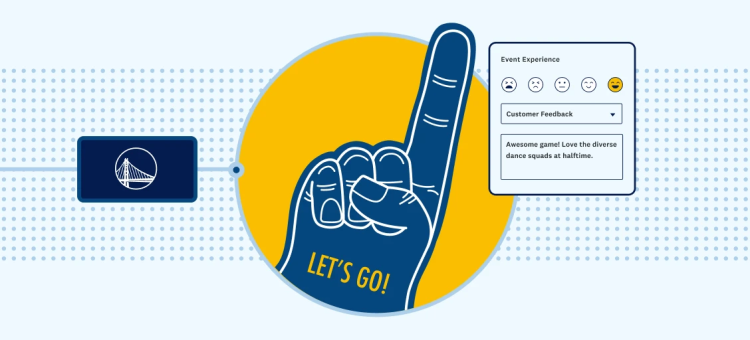This article originally appeared on the Marketo blog. Check it out here.
If you build it, they will come…right? When it comes to surveys, not necessarily.
Like many of today’s savvy marketers, you’re probably looking for creative ways to bring in new leads or contacts and learn more about them, surveys being one of them.
But creating your lead generation survey is just the start—perhaps the biggest hurdle to overcome is actually getting your potential and existing customers to take it.
Increase the power of your brand
You can’t improve what you don’t measure. Start tracking your key brand metrics today with SurveyMonkey Audience.
It’s likely your survey is just one of many marketing messages your audience receives every week, so how do you cut through the noise and get them to not only pay attention to your survey but also fill it out? Here are four effective methods for increasing your survey response rates, from sending the right message to offering incentives:
1. The main message: Make them feel special
To get people to want to complete your survey, express your genuine appreciation for their participation. Consider incorporating this messaging:
- “We want to know what you think.” Emphasize the fact that you value their opinions—and explain how their feedback will directly impact your product roadmap or offerings, the content you send them, etc. Be as specific as possible so they understand how you’re going to leverage their expertise and opinions.
- “Please take 5 minutes to complete our survey.” Be respectful of their time by giving them an idea of how long it will take them to complete your survey. Don’t guess—ask a coworker who hasn’t seen your survey to time themselves taking it. Also, be sure to tell them how much you appreciate the time they’re taking out of their busy day to do you a favor.
Pro tip: Make your survey as short as possible. Our research shows that 45% of survey takers are willing to spend up to five minutes completing a survey, while only a third are willing to spend up to 10 minutes.
2. Eye on the prize: Provide incentives
Sometimes, you can’t rely on goodwill alone. If you’re having a tough time getting people to complete your surveys, try offering incentives to boost your completion rates.
- Discounts, gift cards, and raffles. Without a doubt, cash incentives increase response rates. Yes, there are pros and cons to incentivizing surveys (e.g. people might rush through surveys just to receive the incentive). But in the same research cited above, out of all the people who said they take surveys because they want a prize, 94% report they still give honest answers extremely or very often. Just make sure that your incentive will appeal to everyone in the segment you’re targeting. For instance, an Amazon gift card will probably be appealing to more people than tickets to Disney On Ice.
- The “show me yours and I’ll show you mine” approach. If you’re on a tight budget and can’t offer discounts or prizes, considering sharing the survey results with your survey takers after you’ve collected all of your responses as the incentive (e.g. “See how you compare to your peers.”)
3. Don’t waste their time: Keep surveys relevant
Put yourself in their shoes: Would you spend time on a survey that doesn’t give you a way to say “Does not apply” or skip questions that aren’t relevant to you? Probably not.
For example, if you don’t drink coffee, answering questions about your coffee habits would be a waste of your time—plus, the answers you’d give wouldn’t be accurate or helpful. Instead, use the following methods to keep your surveys relevant:
- Give them an out. Don’t have enough information about your prospects? Add a screening question to send them down the right path. Here’s an example:
In general, how often do you drink coffee (hot or iced)?
Several times a day
About once a day
A few times a week
A few times a month
A few times a year
Never or almost never
If your respondents select “Never or almost never,” you can send them directly to the end of the survey and thank them for their time. That way, you don’t get a bunch of opinions on coffee from people who don’t drink it.
- Send them down the right path. However, let’s say you want to find out why those people don’t drink coffee. Maybe they don’t like the taste or it’s too expensive. If you’re a company looking to market a new brew to a niche audience, use survey logic to send those who select “Never or almost never” to a set of questions tailored to their answer choice.
Pro tip: Good survey platforms will give you the option to easily build survey logic rules and multiple paths into your surveys.
4. Be top-of-mind: Offer surveys in multiple channels
You already have your subscribers’ email addresses, so the easiest way to make sure your survey reaches them is to send it via email. But what if they ignore the survey you send to their inbox?
One thing that can really pique their interest is if they “run into you” all over the internet. Try posting your survey in your social media channels or embedding it into relevant marketing pages. You can even send surveys via SMS. By the second time they see your survey, they’ll undoubtedly remember it. The third time it comes to their attention, they may be extremely curious and complete the survey just to see what you’re up to.
Pro tip: Avoid spamming by mapping your survey responses to your marketing automation platform, then exclude anyone who has completed the survey from receiving future sends.
The bottom line: The more accurate responses, the better
Of course, in addition to learning more about your target audience, you’ll be in a better position to identify and analyze data trends when you receive more responses. If only 12 people take your survey, you’d be hard pressed to come up with accurate conclusions that generalize your target market’s habits and behaviors.
Whether you’re looking to draw conclusions about your target market, learn crucial details about your audience, or identify hot MQLs, send surveys and sync survey feedback with your marketing automation solution to reap all of the benefits.
How do you use lead gen surveys? Share your own tips and tricks in the comments below!



